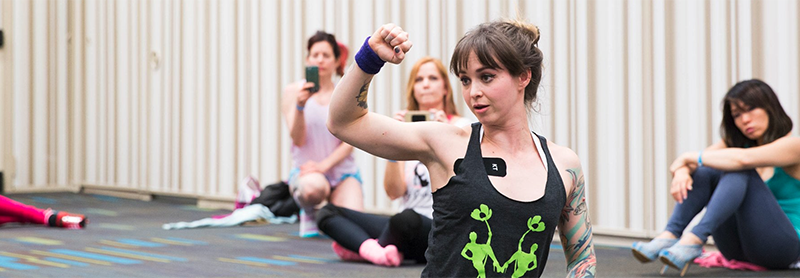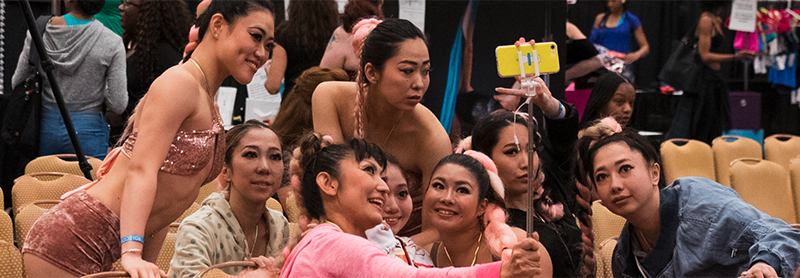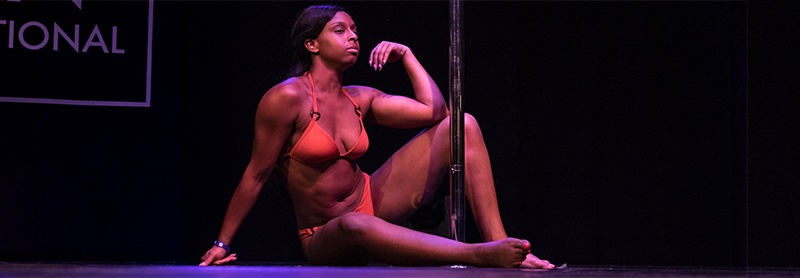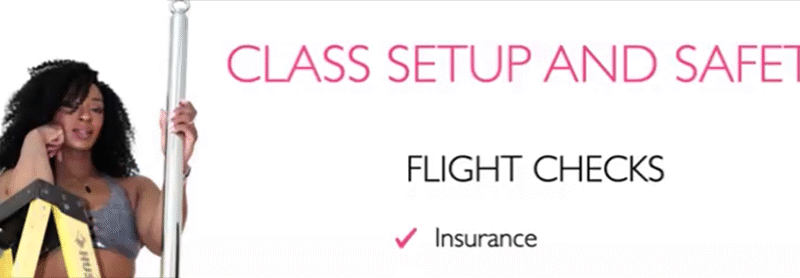Social media marketing may seem confusing and overwhelming sometimes. It is still a great way…

How to create your workshop “menu” as a touring workshop instructor
Becoming a traveling or touring pole dance instructor can be super fun!
It can also be a great way to make money and meet new people.
If you are interested in hosting a touring teacher at your studio, please read this post.
If you are interested in how to start touring (or participate in an event, camp or other teaching outside of your home studio situation), start with this post.
In this post, we’ll talk specifically about how to create your “menu” of workshop options.
What is a workshop “menu”?
For some reason, the term “menu” has become common in many (but not all) pole industry spaces when referring to a packet of workshop offerings from a touring workshop instructor.
Your menu contains all the basic information needed for a studio owner or an event organizer needs to understand who you are, what you do, and most importantly, what you are going to add to the experience for their studios or event(s).
You may also want to have a website, a logo, merchandise, and a whole host of other items that help market you and your unique offering, but at a minimum and to start – you need a list of your workshop offerings.
How to Physically Create Your “Menu”
A menu can be any size but should be concise.
IPIA members can use these templates for free.
Your menu could be a few pages or slides long and are in a “standard” size such as an 8.5×11 (if you’re in the US) or A4 (if you’re not) paper.
It can be a Word document, a website (or a secret/hidden webpage works if you want to control access to that information), a PowerPoint presentation, made in Canva or another free tool (see this post for some tools) or a PDF of any of the above source materials.
Generally, you want your menu to be small enough to email (if an attachment) and not include any linked images or fonts that might not come across right on someone else’s computer.
Make sure you have good, clear photos. They don’t have to be professional photos, but they should clearly show you and your style.
Always ask a friend to proof-read your menu before you send it out – they can help catch obvious spelling mistakes or other small formatting issues that could make you appear less professional.
Create a Relevant Bio
Don’t presume people know who you are.
There are so many amazing pole dancers, so many competitions, so many studios, so many reality-TV shows that it is hard to keep up with whomever is the newest, hottest pole dancer.
If you have won a bunch of awards, write them down! Include the year, the title, and the organization. If you haven’t won a bunch of awards but have done a bunch of training and have years of ballet or a background in club dancing or kinesiology for example, write that down too also including the years studied or when you were certified/trained and if relevant, by whom.
If you have a methodology or teaching ethos that makes you unique make sure it’s referenced in your bio. You might want to have a separate section devoted to that if it is a differentiator to your offering.
If you are just transitioning into this career, it might not be relevant to include that you’re also a PMI-certified Project Manager or that you passed the bar exam in New York. Or it might be. Your bio should tell the story that you want people to know.
Also include links to your social media, performances or class promo videos, website (if you have one), and contact information. If you are working through an agent, include their information too.
Why Should They Choose You
Either in your bio, or in a separate section literally labeled something like “Why Should You Hire Me” explain what is so unique about you.
Do you have a specialty helping plus-size students; men; students with chronic injuries, illnesses, or disabilities? Do you have a particular style such as a “drill sergeant” or are you more like a “coach”?
Don’t presume anyone making a hiring decision knows what makes you special, instead clearly tell them why you are unique and awesome and what you bring to their studio or their event.
Develop Specific Workshop Options
Using your unique offering/why choose you as a basis; develop at least three workshop options with at least one non-pole (if you’re focusing on pole) option.
Consider giving each workshop a similar title if they are variations on the theme of your methodology or your personal brand.
After the title, be very clear about the level of the workshop and what requirements are needed to be successful.
For instance, if you think the workshop should be an “Intermediate” level, what does that mean, exactly? List out clear move pre-requisites such as “must be inverting from the floor, any mount, no aerial inversions required.”
If your workshop must be done in shoes or your students should have knee pads (for instance), include that too!
Create Some Terms and Conditions
You should have a contract for basically anything.
A contract helps legally protect you and the studio or business you are working with. It also should clearly answer questions like how you’re being paid, when you’re being paid, and other requirements or stipulations like housing or transportation.
Check out this sample contract.
Even if you don’t have an official contract, consider asking for clarity on these terms (or others as relevant) in writing (email, text, DM) BEFORE you commit to traveling to teach workshops.
Read more about what you could include in your contract in this post.
Be professional, be clear, and be very specific about who you are and why you are uniquely awesome. Be creative and engaging and you’ll be on your way to becoming a touring pole star with your first professional menu!



